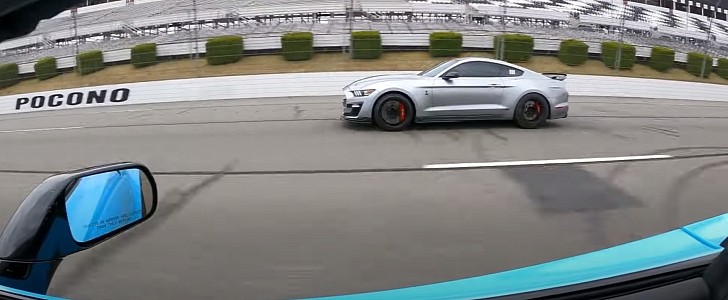The mid-engine Corvette C8 has had an excellent reception since it was introduced, with most people agreeing it is the best Corvette Chevrolet has ever released.
However, there will always be those nostalgics for whom a true Corvette must have its engine under the long hood up front, just like it did for the seven generations before the C8. While their argument makes sense from a traditional point of view, it's similar to the whole discussion surrounding BMW's decision to make its M cars all-wheel-drive after decades of sending power to the rear wheels alone.
At the end of the day, it's all about gaining more performance. If the change helps with that substantially—as it undoubtedly does for BMW—then even those who oppose it initially will eventually come around. Switching from a front-mid-engine to a rear-mid-engine setup has definitely improved the Corvette's handling and aerodynamics, and we're just about to see why the latter matters so much.
Despite the fact the C8 has been around for nearly two years now, the only one you can buy is the vanilla Stingray version with its 6.2-liter naturally aspirated engine developing 495 hp (502 PS). Obviously, people haven't remained idle about its output, and plenty of tuning efforts have been made. However, cracking the ECU has proven difficult, so there aren't as many powerful builds around as you'd expect.
The C7 generation, on the other hand, has been around for ages, not to mention anyone interested in boosting its power can get a head start by buying the ZR1 version, whose supercharged V8 produces 755 hp out of the box. A 1,000-hp build like the one Street Speed 717's Mike has, then, is not exactly out of the ordinary.
It's even less so when you look at the kind of cars he races against at the slipstream racing event held on the Pocono Raceway NASCAR track. You have a 900-hp McLaren 720S, a 930-whp Ford Mustang, and a 1,200-hp Ford Mustang Shelby GT500. Average horsepower? Well over 1,000.
However, this is where the C8 would have brought a clear advantage over the C7. With these cars routinely going over 160 mph (257 kph) during their runs, aerodynamics plays an excruciatingly important part. That's something best seen during the McLaren race, where the British supercar drops back initially due to inferior power but starts climbing back up once the speed increase.
Sure, other aspects—such as gearing ratios—could play a part as well, but you can bet your last dime that huge wing at the back of the C7 doesn't help, and neither does all the air that's driven through the engine bay at the front.
That said, maybe with the sole exception of the McLaren 720S (and it's a big maybe), the C7 ZR1 is easily the best-looking car out of all that make an appearance in the clip below. Best-sounding too? Grab a headset and decide for yourself.
At the end of the day, it's all about gaining more performance. If the change helps with that substantially—as it undoubtedly does for BMW—then even those who oppose it initially will eventually come around. Switching from a front-mid-engine to a rear-mid-engine setup has definitely improved the Corvette's handling and aerodynamics, and we're just about to see why the latter matters so much.
Despite the fact the C8 has been around for nearly two years now, the only one you can buy is the vanilla Stingray version with its 6.2-liter naturally aspirated engine developing 495 hp (502 PS). Obviously, people haven't remained idle about its output, and plenty of tuning efforts have been made. However, cracking the ECU has proven difficult, so there aren't as many powerful builds around as you'd expect.
The C7 generation, on the other hand, has been around for ages, not to mention anyone interested in boosting its power can get a head start by buying the ZR1 version, whose supercharged V8 produces 755 hp out of the box. A 1,000-hp build like the one Street Speed 717's Mike has, then, is not exactly out of the ordinary.
It's even less so when you look at the kind of cars he races against at the slipstream racing event held on the Pocono Raceway NASCAR track. You have a 900-hp McLaren 720S, a 930-whp Ford Mustang, and a 1,200-hp Ford Mustang Shelby GT500. Average horsepower? Well over 1,000.
However, this is where the C8 would have brought a clear advantage over the C7. With these cars routinely going over 160 mph (257 kph) during their runs, aerodynamics plays an excruciatingly important part. That's something best seen during the McLaren race, where the British supercar drops back initially due to inferior power but starts climbing back up once the speed increase.
Sure, other aspects—such as gearing ratios—could play a part as well, but you can bet your last dime that huge wing at the back of the C7 doesn't help, and neither does all the air that's driven through the engine bay at the front.
That said, maybe with the sole exception of the McLaren 720S (and it's a big maybe), the C7 ZR1 is easily the best-looking car out of all that make an appearance in the clip below. Best-sounding too? Grab a headset and decide for yourself.






